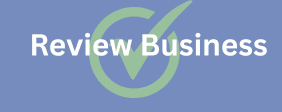A compelling call-to-action (CTA) can make or break your conversion rates. But it’s not just what your CTA says—it’s also where you put it. Strategic CTA placement is essential for guiding your visitors and boosting clicks, sign-ups, and sales.
In this post, we’ll explore the best places to costa rica phone number list put CTAs, why placement matters, and how to test what works for your audience.
Why CTA Placement Matters
You could have the best offer in the world, but if your audience never sees the CTA—or sees it at the wrong time—they won’t take action. Effective whatsapp remarketing campaigns placement ensures your CTA is seen at the right moment, by the right people, with the right message.
Best CTA Placement Strategies
1. Above the Fold
What It Means:
“Above the fold” is the section of your webpage that’s visible without scrolling.
Why It Works:
This is prime real estate for your CTA. Visitors make decisions in seconds. Putting a CTA front and center gives them immediate direction.
Use it when:
-
Your offer is simple and clear
-
Visitors are likely to convert quickly
Example: A headline, benefit statement, and a “Get Started” button at the top of a landing page
2. After the Value Proposition
Some visitors need a bit more context before usa lists they commit. Placing a CTA right after explaining your offer’s core benefit is a smart move.
Why It Works:
This spot hits users when they understand the value but haven’t bounced yet.
Use it for:
-
Products or services that require minimal explanation
-
Lead magnets and newsletters
3. Within Content (Mid-Page CTA)
Placing a CTA in the middle of your blog post or service page ensures you capture readers who are engaged but may not scroll to the bottom.
Why It Works:
Engaged users are more likely to act when CTAs appear naturally within high-value content.
Pro Tip:
Use different styles like buttons, banners, or inline links to avoid disruption.
4. At the Bottom of the Page
If someone scrolls to the bottom, they’re interested. That makes this a natural place to include a strong, final CTA.
Why It Works:
You’ve built trust and explained your offer—now it’s time to close the deal.
